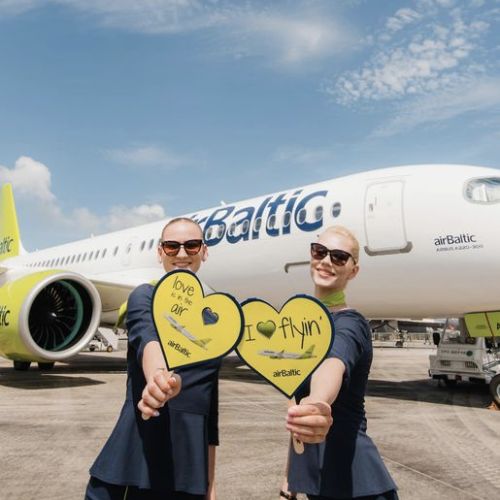

Introduction to airBaltic’s Hybrid Model
Since its inception in 1995, AirBaltic has been a pioneer in the aviation industry. The Latvian airline was one of the first to introduce a hybrid business model, which combines the best features of a traditional airline with the low-cost carrier (LCC) model.
The hybrid model allows AirBaltic to offer its customers a wide variety of services and products, while still maintaining low fares.
Some of the benefits of airBaltic’s hybrid model include:
A wide variety of flight options: AirBaltic offers scheduled flights to over 60 destinations in Europe, the Middle East, and Asia. In addition, the airline also offers charter services and cargo flights.
A focus on customer service: AirBaltic award-winning customer service is available 24/7 in multiple languages. The airline also offers a loyalty program and various other amenities to make travel more comfortable and convenient.
An extensive network: AirBaltic has partnerships with over 30 airlines, which gives it access to a global network of over 600 destinations. This makes it easy to find flights that fit your schedule and budget.
Benefits of AirBaltic's Hybrid Model
As air travel becomes increasingly accessible and affordable, more people are taking to the skies. However, with this increase in demand comes an increase in environmental concerns. Traditional jet fuel is a major contributor to greenhouse gas emissions, and as the airline industry continues to grow, so too will its impact on the planet.
This is where AirBaltic hybrid model comes in. The Latvian airline has developed a unique approach to air travel that reduces its environmental footprint while still providing an excellent experience for passengers.
Here are some of the benefits of AirBaltic's hybrid model:
1. Reduced emissions: AirBaltic hybrid aircraft use a combination of jet fuel and biofuel, which reduces their carbon dioxide emissions by up to 50%. This is a significant reduction when compared to traditional airlines, which typically emit around 160 grams of CO2 per passenger kilometer.
2. Improved efficiency: The use of biofuel also results in improved engine efficiency, meaning that AirBaltic's hybrid aircraft use less fuel overall. This not only reduces emissions further but also saves the airline money, which can be passed on to passengers in the form of lower fares.
3. A cleaner future: Biofuels are renewable and sustainable, meaning that they have a much lower impact on the environment than traditional fossil fuels. By using biofuels, AirBaltic is helping to create a cleaner future for
How does AirBaltic's Hybrid Model Work?
Airlines are constantly looking for ways to reduce their environmental impact and improve their financial bottom line. One airline that is leading the way in this area is AirBaltic. AirBaltic has developed a unique hybrid model that combines the best aspects of both traditional and low-cost airlines.
The traditional airline model relies on scheduled flights and higher fares to generate revenue. This model typically results in higher emissions due to the need to keep aircraft aloft even when there are no passengers. Low-cost airlines, on the other hand, use a no-frills approach that cuts costs by using smaller aircraft and fewer staff. These airlines often have less predictable schedules and offer lower fares.
AirBaltic's hybrid model takes the best aspects of both models to create a more efficient and sustainable operation. The airline operates a fleet of modern, fuel-efficient aircraft that are designed for short-haul flights. This allows them to keep their operating costs low while still providing reliable service. In addition, AirBaltic has implemented innovative technologies such as real-time monitoring of weather conditions to optimize flight routes and reduce emissions. As a result of these efforts, AirBaltic has become one of the most environmentally friendly airlines in Europe.
What Makes AirBaltic's Hybrid Model Different from Other Airlines?
AirBaltic hybrid model is different from other airlines in a few key ways. First, their focus on providing a high-quality customer experience means that they are constantly innovating and looking for new ways to improve the travel experience. This includes everything from their use of technology to their focus on sustainable travel options.
Second, AirBaltic has a strong commitment to safety and security. This is evident in their investment in state-of-the-art aircraft and their training programs for staff and crew.
AirBaltic is committed to being a good corporate citizen. They invest in local communities and strive to minimize their environmental impact. These values are reflected in everything they do, from their charitable work to their sustainability initiatives.

Is This the Future of Air Travel?
Airlines are constantly searching for ways to reduce their environmental impact and operating costs. One way they are doing this is by investing in hybrid aircraft. A hybrid aircraft is powered by both a traditional fossil fuel engine and an electric motor.
The benefits of hybrid aircraft are twofold. First, they are more fuel-efficient than traditional aircraft. This means that airlines can save money on fuel costs, which make up a large portion of their operating budget.
So far, only a few airlines have invested in hybrid aircraft. AirBaltic is one of them. AirBaltic has been operating its hybrid aircraft since 2016, and it plans to transition its entire fleet to hybrids by 2025.
The future of air travel looks bright for both passengers and the environment. With airlines like AirBaltic leading the way, we can expect to see more fuel-efficient and environmentally-friendly planes in the skies in the years to come.
Conclusion
AirBaltic hybrid model is a unique approach to air travel that looks to the future of the industry. By combining traditional and innovative methods, they are able to provide an enjoyable experience for passengers while also saving on costs. This model is not only beneficial for travelers but it could also be adopted by other airlines in order to remain competitive in an ever-changing landscape. As this technology continues to improve, we can expect more companies embracing this new kind of air travel in the near future.


